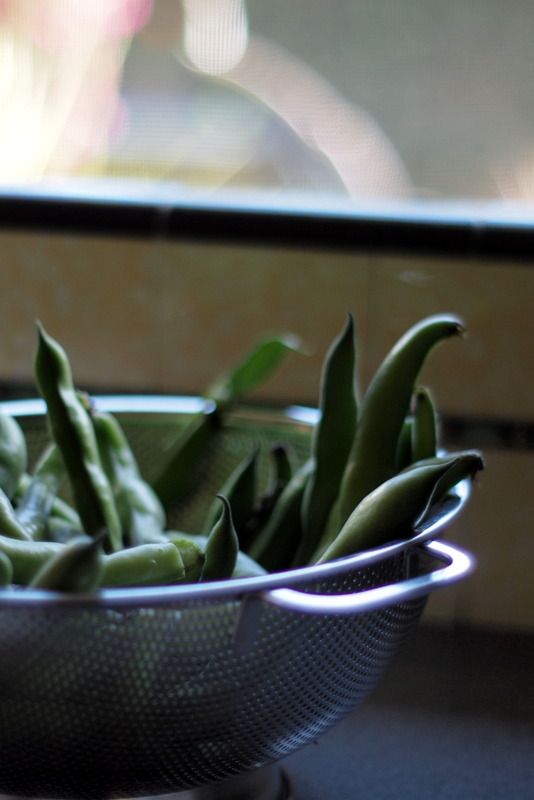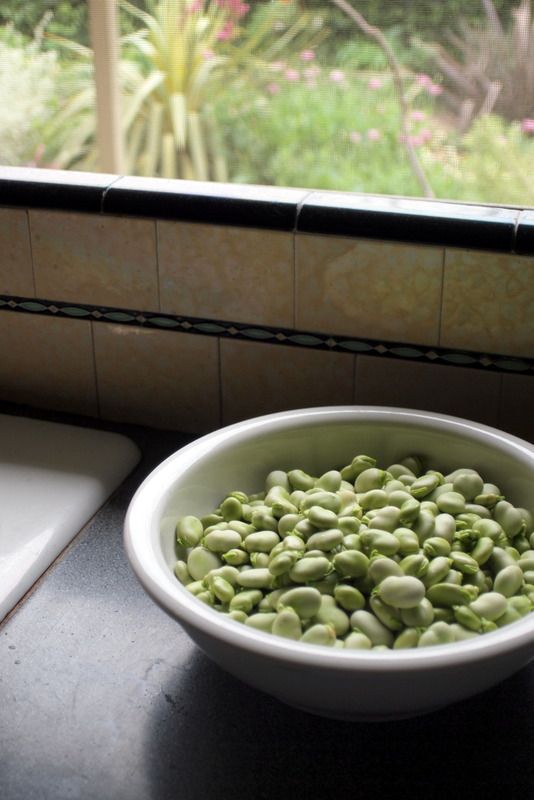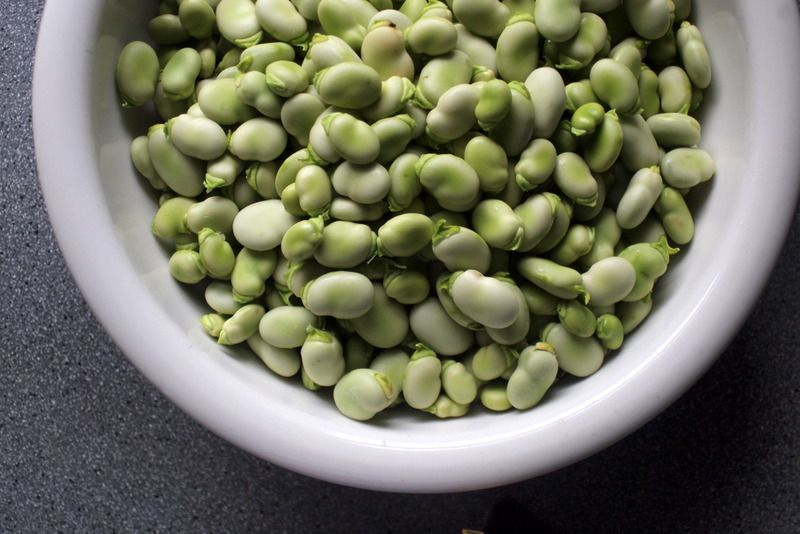I pulled the fava bean plants out yesterday and tossed them on the compost pile, after picking and filling another shopping bag full of beans that will ultimately be shelled, blanched, inner membrane peeled again, and thus be whittled down into modest-sized servings. One Saturday a couple weeks ago, at least three people took their turn in the kitchen over an afternoon shucking beans. If you haven’t already done so, get some music into the kitchen specifically for this chore. Surprisingly, after all the unexpected labor involved with eating fresh fava beans, I can truly admit to loving them. I’m glad their season is over, and we’re moving on to summer’s green beans, but being able to grow a bean this substantial during the cool months of late winter/spring is a luxury I want to repeat next year. Here in Los Angeles the seeds are sown in fall.

At home what ground isn’t needed for shelter and related pursuits gets filled with my latest plant enthusiams, almost alway nonedible. All this fava bean action is taking place in my community garden plot, where I’m surrounded by seasoned vegetable growers, none of whom, from what I could tell, chose to grow fava beans over winter. Lots of them stopped to admire mine, though, which grew into husky plants 5 feet high. Is it fear of favism, a rare syndrome triggered by eating fava beans which affects mostly men of mediterranean ancestry? (Pythagoras wouldn’t go near them.) For one of the world’s oldest cultivated crops, uber nutritious and a great source of protein, the community garden this winter had very few takers. I grew them mainly for the soil-improving qualities and their ability to put up with my crap soil, which is why I’ve grown them in the past. But this time it seemed exceedingly foolish not to even give them a try. So I did. And that’s when I discovered all the prep that’s involved.

They are an undeniably beautiful bean.
Once the beans are unzipped from their fuzzy sleeping bags, the work has just begun. The beans must be blanched briefly, 30 seconds to a minute, then plunged in an ice bath. And after all this, the outer membrane of each bean still has to be removed, a tricky and slippery business. And because I’ve had fava beans on the brain this spring, wouldn’t you know that one of the Saturday public radio cooking shows delivered a bombshell while I was driving out to Riverside for a plant sale: adding baking soda to the boiling water, say a tablespoon, on its own will slip the membrane off. Except not really. I’ve tried this twice, and maybe a small percentage of the beans voluntarily shed their skins after this alkaline bath, but it’s by no means the answer we’ve all been waiting for. It helps, but there’s still plenty of work left to do.
I found this little video that describes the prep process.
We’ve added the beans mostly to pasta, but here’s nine recipes to try, including the classic Italian version with pancetta.

Fava, it’s a complicated bean, with a nutty flavor all its own, undeservedly reduced to the object of punchlines having to do with chianti. Is it worthwhile? I say yes. Just don’t forget that essential ingredient, something to listen to while you’re getting them ready.

My teamster ancestors (the wagon kind, not the Jimmy Hoffa kind) used to grow and feed them to the horses. Looks to be far beyond my nearly-absent culinary skills, but they are pretty in that bowl.
I have to admit I’ve never had a fava bean. They sound like alot of work and then there’s those bad chianti jokes…
Picked nine pounds yesterday….and all my chilluns have fled the nest so I was on my own for the shucking, plus the rest. Listened to podcasts of missed Good Food shows instead of the music you suggested.
@Hoov, my teamster ancestors (the Jimmy Hoffa kind) never introduced me to fava beans. In the plots of the Italian fisherman at my first community garden in San Pedro is where I became acquainted with them.
@Sue, you bring the pancetta, and have Les cook you up a batch. Bet he’d love the challenge.
@Laura, that’s a staggering amount of fava beans. Thank goodness for podcasts. Try the baking soda trick and let me know what you think.
Your favas look fantastic!! I love favas. This is my second year growing them…in a large container. Results are ok. I will definitely grow them in my raised beds this fall for all the good reasons. I can only hope my beans will look as good as your harvest!
After hearing that segment on Good Food I too tried the baking soda trick. The first time it didn’t seem to help at all, but I think I didn’t use enough baking soda. I looked up the proper proportions before trying it again last weekend (someone said 1 Tbs per quart of water) and it worked fairly well. I’m not sure if it decreased the amount of time it took to shuck them however because only about half came out of their membranes and it made the membranes on the other ones all mushy and kind of harder to remove. My fava bean plants are starting to fade with the heat and I’ll probably compost them soon. Maybe I can squeeze out one more harvest before that though.
@D, wow, that’s impressive, to grow them in a container. These are big plants! I’ve read that the plants are magnets for a black aphid, but mine were pristine, not a bug on them. The very old pods were starting to get a few scale on the outside of the pods, but they were too old to eat anyway.
@Christine, you described my results exactly. I tried about a tablespoon of baking soda without much result then really poured it in the second time. Still not much difference.
Here in the mid-Atlantic I am in the middle of fava harvesting season. I am a fava novice (planted them because chefs are crazy about them in these parts, as they are about anything that takes a lot of trouble to grow — or to harvest from the wild). I love everything about the plants — their size, their robustness, the insect community that happens around them — but have not tried eating the beans. Yet. To tell the truth, I’m thinking, why bother, when edible podded peas are in season? (!)